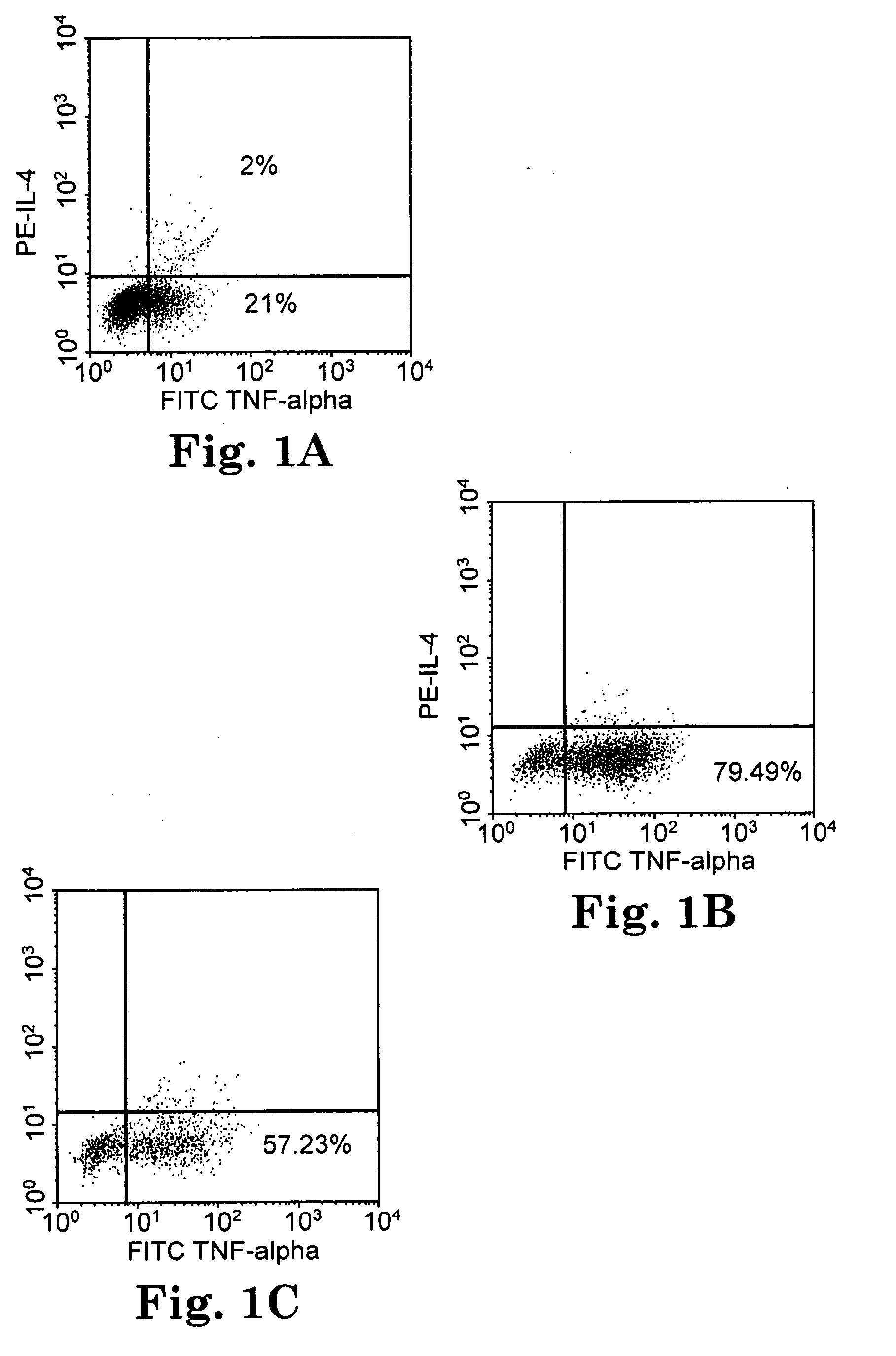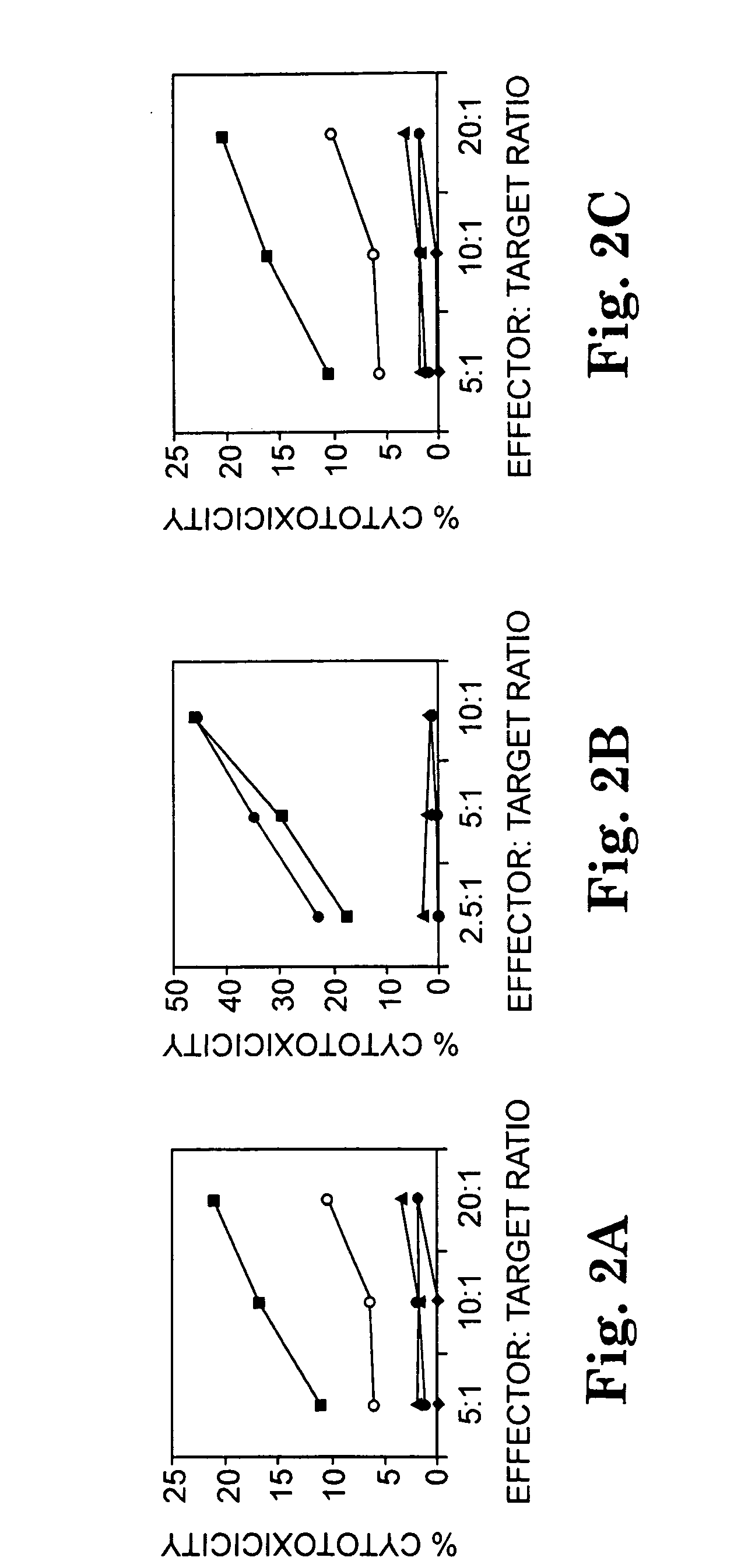Multi-epitope peptide-loaded dendritic cell immunotherapy for cancer
a dendritic cell and immunotherapy technology, applied in the field of cancer immunotherapy with multi-epitope peptides, can solve problems such as difficulty in selecting universal peptides, and achieve the effect of preventing disease recurren
- Summary
- Abstract
- Description
- Claims
- Application Information
AI Technical Summary
Benefits of technology
Problems solved by technology
Method used
Image
Examples
example 1
Stratum Corneum Chymotryptic Enzyme (SCCE)
[0051]SCCE, also known as kallikrein 7, is a serine protease that is overexpressed by ovarian cancer cells but not by normal ovaries or other normal adult tissues, except the outermost cornified layer of the skin (15). Immunohistochemical analysis of 14 ovarian tumors showed positive staining localized to the cytoplasm and cell membrane, suggesting that SCCE may be expressed as both secreted and membrane forms (15). Quantitative RT-PCR revealed SCCE expression in >88% of serous ovarian tumors, 100% of endometrioid and clear cell tumors, but only 29% (two of seven) mucinous tumors (15). SCCE is also overexpressed in cervical cancer (10).
[0052]The tightly limited tissue distribution of SCCE and overexpression in ovarian tumors suggests that it would be a favorable target antigen for immunotherapy. In this Example, we used computer algorithms to select several extended SCCE peptides predicted to have epitopes that bind to multiple HLA class II ...
example 2
Hepsin Peptides
[0072]Hepsin is a transmembrane serine protease that is overexpressed in prostate cancer and ovarian cancer, as well as renal cell carcinoma (19-26). In at least one report its overexpression was linked to metastasis and tumor progression (21). In this Example the hepsin sequence (SEQ ID NO:2) was scanned to identify regions predicted to have multiple epitopes that bind to a variety of HLA class II allelic proteins. Peptides containing the predicted epitopes were synthesized and used to amplify CD4+ and CD8+ T cells and the response of the amplified T cells to the peptides was tested.
Results:
[0073]The sequence of hepsin was processed using the algorithms described in Example 1 to identify epitopes predicted to bind to HLA class II alleles DRB1*0401, DRB1*0101, and DRB1*0701. Peptides were synthesized corresponding to sequences in hepsin predicted to have multiple epitopes that bind to at least two of those three HLA class II allelic proteins. The selected peptides wer...
example 3
Matriptase Peptides
[0078]Matriptase (also known as TADG-15) is a transmembrane serine protease that was discovered in 1993 and cloned in 1999 (3, 7). It is overexpressed in many tumors of epithelial origin, including carcinomas of the head and neck, mesothelium, breast, ovary, cervix, prostate, lung, and gastrointestinal tract, as well as in cell lines derived from these tumors (8). Its expression has been linked to increased tumor invasiveness (5-6). It is expressed in a high percentage of ovarian carcinomas but not in normal ovary tissue (4). Matriptase's pattern of overexpression in many tumors makes it an attractive target for immunotherapy in ovarian and other cancers. The importance of matriptase expression in prostate cancer progression has been emphasized by studies showing that a selective matriptase inhibitor inhibits growth of androgen-independent human prostate tumor xenografts in nude mice (6). Furthermore, overexpression of matriptase in the skin of transgenic mice res...
PUM
| Property | Measurement | Unit |
|---|---|---|
| Fraction | aaaaa | aaaaa |
| Fraction | aaaaa | aaaaa |
| Fraction | aaaaa | aaaaa |
Abstract
Description
Claims
Application Information
 Login to View More
Login to View More - R&D
- Intellectual Property
- Life Sciences
- Materials
- Tech Scout
- Unparalleled Data Quality
- Higher Quality Content
- 60% Fewer Hallucinations
Browse by: Latest US Patents, China's latest patents, Technical Efficacy Thesaurus, Application Domain, Technology Topic, Popular Technical Reports.
© 2025 PatSnap. All rights reserved.Legal|Privacy policy|Modern Slavery Act Transparency Statement|Sitemap|About US| Contact US: help@patsnap.com


